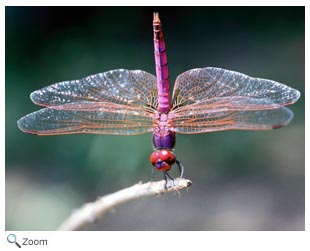Hexapoda - The Insects |
|
||||||
Insects also have an exoskeleton. The exoskeleton is an outside covering that protects the insect's internal organs. There are over 800,000 species of insects - more than all the other animal groups combined! Insects can be found in a wide variety of environments all over the world!
|
|||||||


